Scones
This post may contain affiliate links. Read my full disclosure policy.
Say goodbye to dry, crumbly scones—a secret ingredient makes these light, tender and buttery!
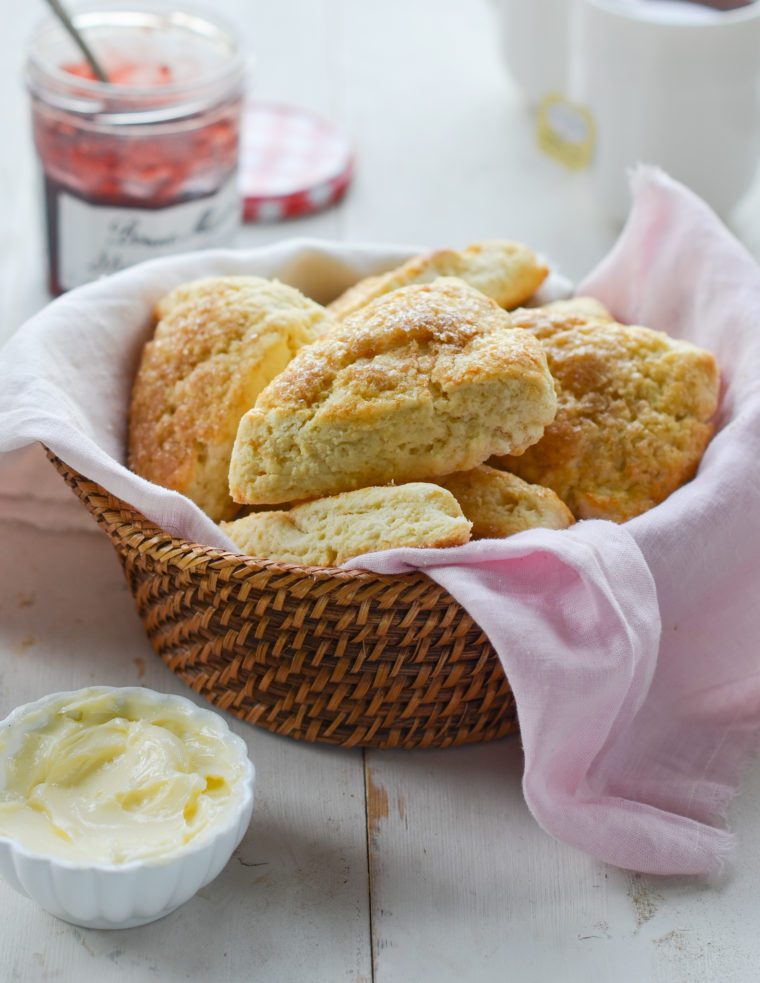
Similar to American biscuits, scones are a British teatime staple, often enjoyed with butter, jam, or clotted cream. They’re a favorite in American bakeries too, where they are often sweeter and dressed up with various mix-ins and frostings. However, all too often, instead of a buttery, flaky treat, scones are dry, leaving us with a lap full of crumbs and searching for the nearest cup of coffee! If that’s been your experience, I promise these light, tender, buttery scones will change your mind!
The secret is using cake flour instead of all-purpose flour. It’s lower in protein and makes for ultra-tender scones. If you don’t have any on hand, you can easily make your own using all-purpose flour and cornstarch (see the FAQs below). For a kid-friendly twist, don’t miss my chocolate chip scones.
Table of Contents
“After living in the U.K. for 5 years and enjoying their high tea I’ve been on the lookout for the perfect scone recipe…this is it!!”
What You’ll Need To Make Scones
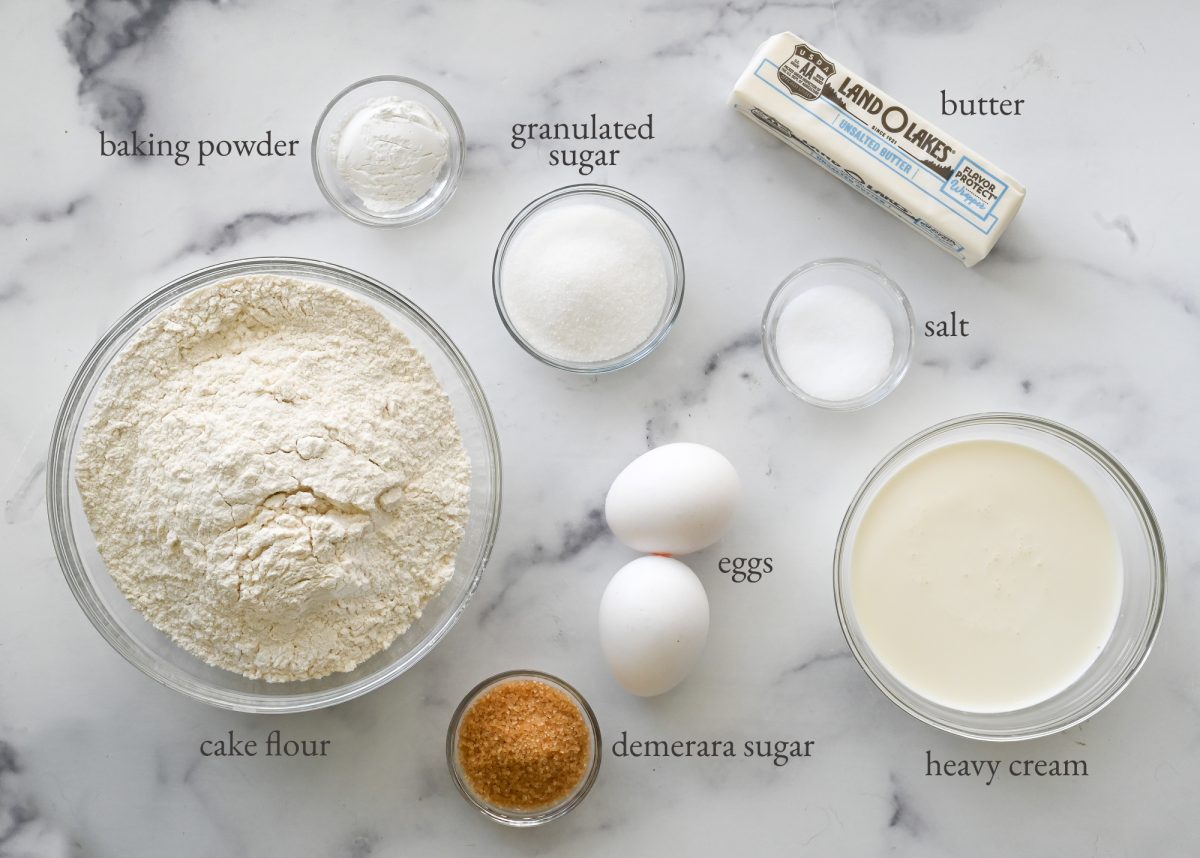
- Cake Flour: The base of the scones. Cake flour provides a softer, more delicate texture than all-purpose flour. Don’t have cake flour on hand? See the FAQs to see how to make your own cake flour using all-purpose flour and cornstarch.
- Baking Powder: Acts as a leavening agent, helping the scones rise and become light and fluffy.
- Sugar: Adds sweetness and enhances the flavor of the scones.
- Butter: Adds richness, flavor, and a tender crumb to the scones.
- Eggs: Provides structure to the dough and helps bind the ingredients together. Egg brushed on top of the dough gives the finished scones a beautiful golden color.
- Heavy Cream: Adds moisture, richness, and a creamy texture to the scones. Do not substitute light cream or milk.
- Demerara Sugar: (Also called raw or turbinado sugar) Adds a crunchy texture and caramelized sweetness to the scone tops, providing a delightful contrast to the tender interior.
- Jump to the printable recipe for precise measurements
Step-By-Step Instructions
Preheat the oven to 425°F and set an oven rack in the middle position. Line a baking sheet with parchment paper. In a large bowl, whisk together 2 cups cake flour, 2½ teaspoons baking powder, 2½ tablespoons granulated sugar, and a scant ¾ teaspoon salt.
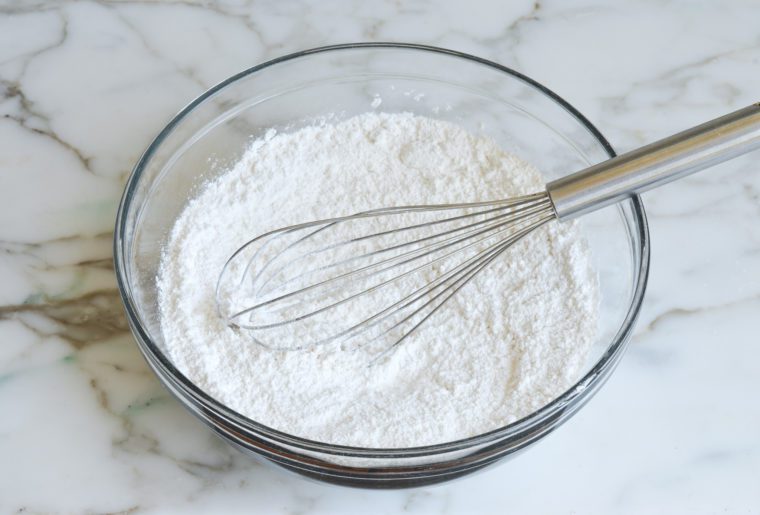
Add the cold butter, and cut into small pieces.
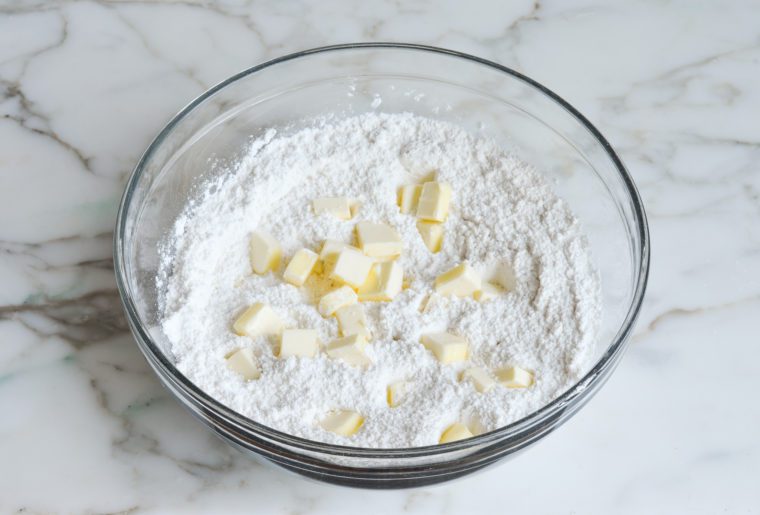
Use your fingertips to rub the butter into the dry ingredients until the mixture resembles coarse crumbs with pea-size clumps of butter within.
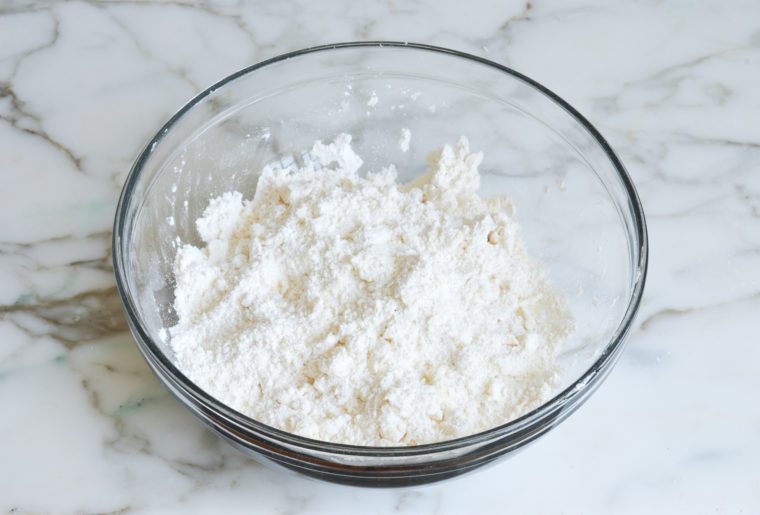
In a small bowl or liquid measuring cup, whisk together ⅔ cup heavy cream and 1 egg.
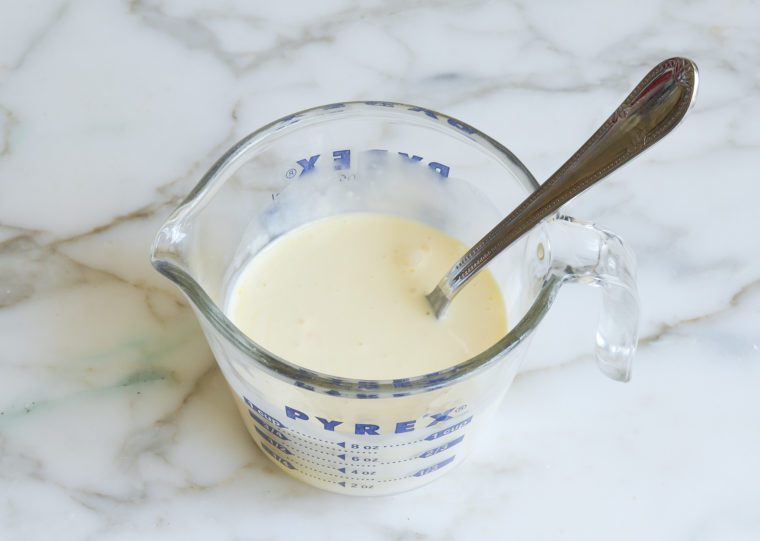
Make a well in center of dry ingredients, then pour the cream/egg mixture in.
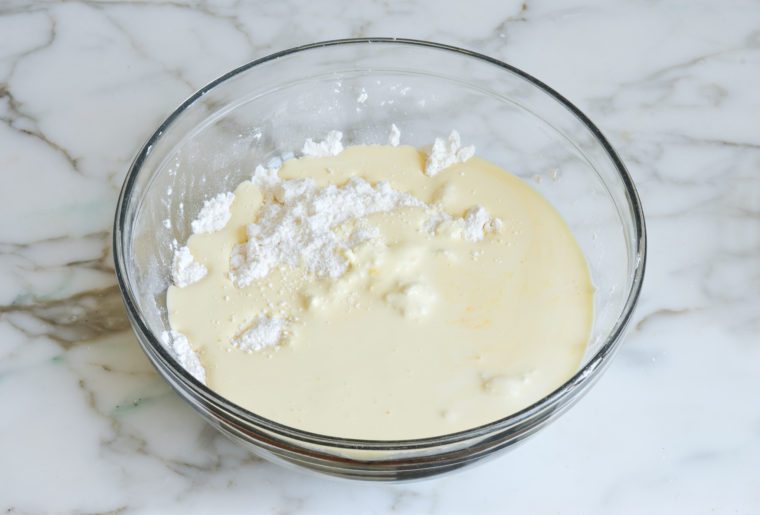
Use a rubber spatula to mix until the dough comes together into a mass. It should be a bit sticky but not so wet that you can’t handle it with your hands. If it seems dry, add the remaining 2 tablespoons of cream.
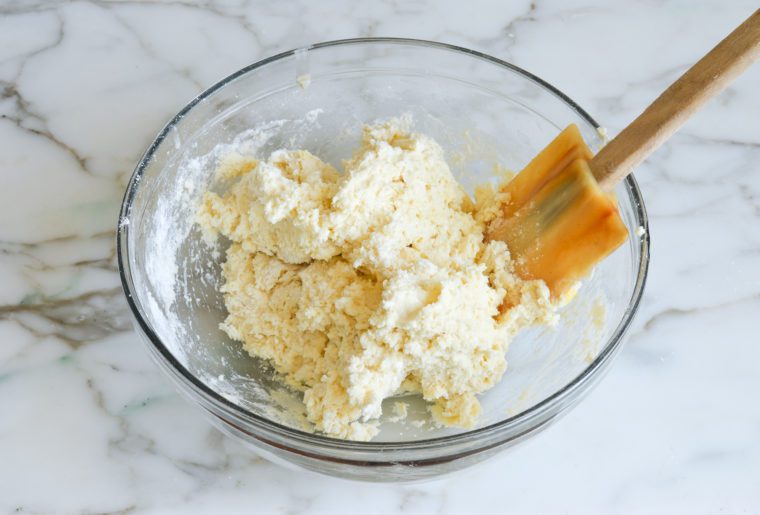
Dust a work surface lightly with flour, then dump the scone dough onto the surface.
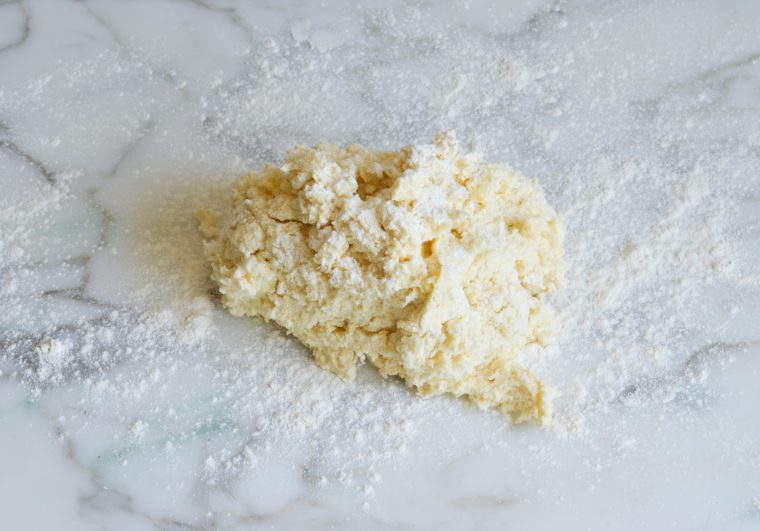
Knead very gently a few times until dough comes together into a ball. (Sprinkle more flour, little by little, if dough is too sticky to work with.) Press dough into a flat circle about 7 inches in diameter and ¾-inch thick.
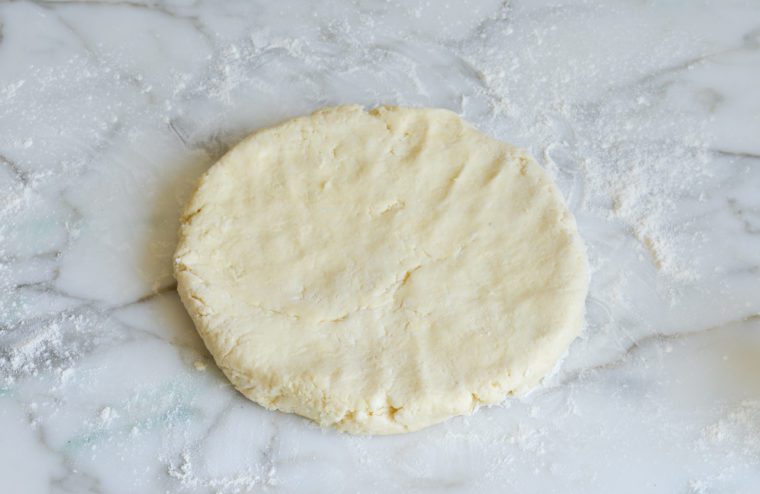
Use a sharp knife to cut into 8 triangles.
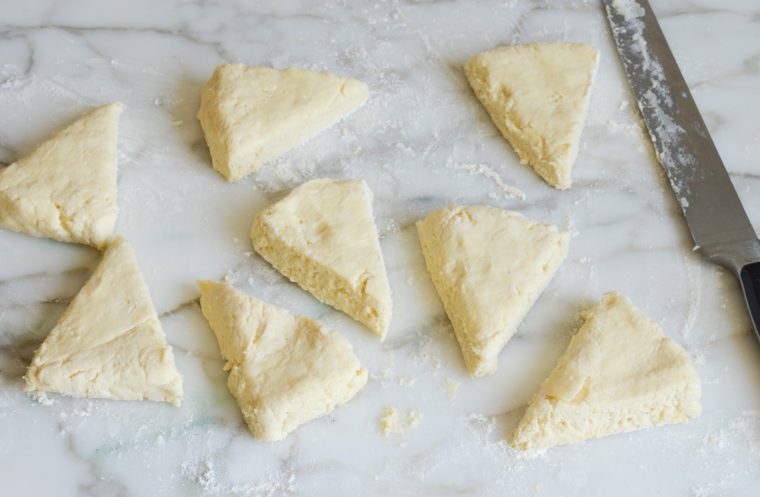
Transfer the wedges to the prepared baking sheet. Brush lightly with a beaten egg and sprinkle with about 1 tablespoon demerara sugar.
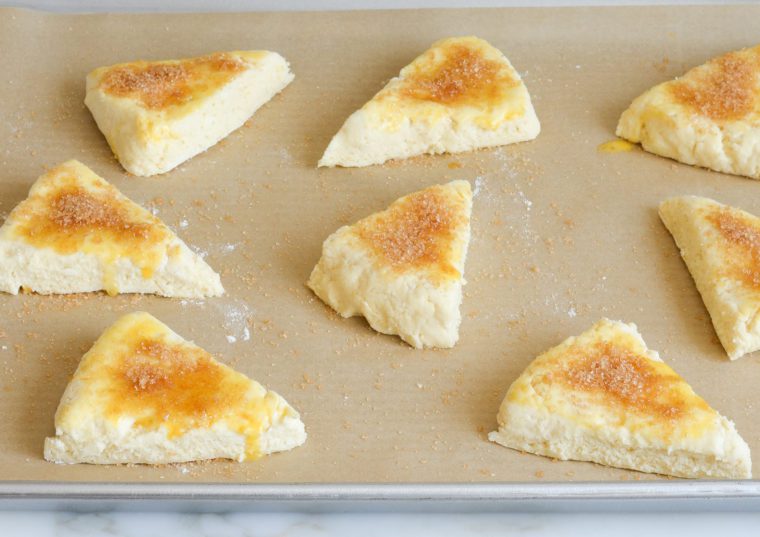
Bake for 10 to 12 minutes, until the tops are lightly golden and firm to the touch.
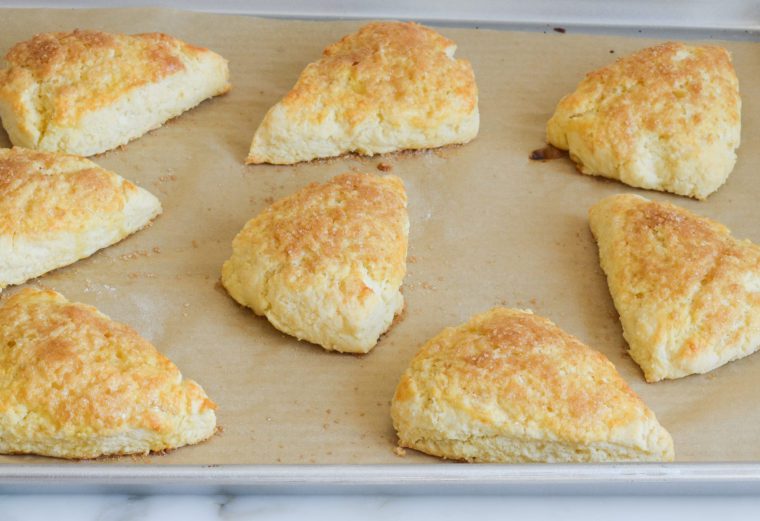
Serve warm from the oven.
Frequently Asked Questions
Cake flour is finer and lower in protein, which makes lighter and fluffier scones. If you don’t have any on hand, a simple blend of all-purpose flour and a bit of cornstarch makes a great substitute. Simply whisk together 1¾ cups all-purpose flour and ¼ cup cornstarch. This easy swap will take your scones from just okay to fantastic, giving them that perfectly tender, fluffy, ultra-buttery crumb. If you’d like some other options for using up cake flour, take your pick from cherry cornmeal upside-down cake to yellow cake with chocolate buttercream frosting to Boston cream pie.
Definitely! To freeze them before baking, place the raw scones on a baking sheet, let set in the freezer, then place in an airtight container and freeze for up to 3 months. Bake as needed directly from the freezer. (Wait until you’re ready to bake the scones to brush on the egg wash, and allow 1 to 2 minutes longer in the oven.) To freeze after baking, let the scones cool completely and store in an airtight container for up to 3 months. Before serving, remove the scones from the container and let them come to room temperature. (If you have the option to freeze the scones before or after baking them, you will get the best results if you freeze before baking.)
Demerara (also called raw or turbinado) sugar is a type of cane sugar with large, crunchy crystals and a slightly amber color. It has a natural caramel-like flavor and is often used to add texture and sweetness to the tops or exterior of baked goods like pecan shortbread cookies and butterscotch pecan scones. If you don’t have it on hand, you can substitute light or dark brown sugar, or simply omit it.

Video Tutorial
You May Also Like
Scones
Say goodbye to dry, crumbly scones—a secret ingredient makes these light, tender and buttery!
Ingredients
For The Dough
- 2 cups cake flour, spooned into measuring cup and leveled off (see note on substitution)
- 2½ teaspoons baking powder
- 2½ tablespoons sugar
- Scant ¾ teaspoon salt
- 1 stick (½ cup) cold unsalted butter, cut into ½-inch pieces
- 1 large egg
- ⅔ cup heavy cream (do not substitute milk or light cream), plus more if needed
For The Topping
- 1 large egg, beaten
- 1 tablespoon demerara sugar (also called raw sugar or turbinado; optional)
Instructions
- Preheat the oven to 425°F and set an oven rack in the middle position. Line a baking sheet with parchment paper.
- In a large bowl, whisk together the flour, salt, baking powder and granulated sugar. Add the pieces of cold butter. Using your fingertips, rub the butter into the dry ingredients until the mixture resembles coarse crumbs with pea-size clumps of butter within.
- In a small bowl or liquid measuring cup, whisk together the heavy cream and the egg. Make a well in center of dry ingredients, then pour the cream/egg mixture in. Using a rubber spatula, mix until the dough comes together into a mass. It should be a bit sticky but not so wet that you can't handle it with your hands. If it seems dry, add 1 to 2 tablespoons more cream.
- Dust a work surface lightly with flour, then dump the scone dough onto the surface; dust the dough with a bit of flour as well. Knead very gently a few times until the dough comes together into a ball. (Sprinkle more flour, little by little, if dough is too sticky to work with.) Press the dough into a flat circle about 7 inches in diameter and ¾-inch thick, then use a sharp knife to cut into 8 even triangles. Transfer the wedges to the prepared baking sheet. Brush lightly with the beaten egg and sprinkle with the demerara sugar, if using. Bake for 11 to 13 minutes, until the tops are lightly golden and firm to the touch. Serve warm from the oven.
- Note: If you don't have cake flour, you can make your own: simply whisk together 1¾ cups all-purpose flour and ¼ cup cornstarch.
- Freezer-Friendly Instructions: To freeze before baking, place the raw scones on a baking sheet, let set in the freezer, then place in an airtight container and freeze for up to 3 months. Bake as needed directly from the freezer. (Allow 1 to 2 minutes longer in the oven.) To freeze after baking, let the scones cool completely and store in an airtight container for up to 3 months. Before serving, remove the scones from the container and let them come to room temperature. (If you have the option to freeze the scones before or after baking them, you will get the best results if you freeze before baking.)
Nutrition Information
Powered by ![]()
- Per serving (8 servings)
- Serving size: 1 scone
- Calories: 322
- Fat: 20 g
- Saturated fat: 12 g
- Carbohydrates: 33 g
- Sugar: 6 g
- Fiber: 1 g
- Protein: 4 g
- Sodium: 188 mg
- Cholesterol: 76 mg
This website is written and produced for informational purposes only. I am not a certified nutritionist and the nutritional data on this site has not been evaluated or approved by a nutritionist or the Food and Drug Administration. Nutritional information is offered as a courtesy and should not be construed as a guarantee. The data is calculated through an online nutritional calculator, Edamam.com. Although I do my best to provide accurate nutritional information, these figures should be considered estimates only. Varying factors such as product types or brands purchased, natural fluctuations in fresh produce, and the way ingredients are processed change the effective nutritional information in any given recipe. Furthermore, different online calculators provide different results depending on their own nutrition fact sources and algorithms. To obtain the most accurate nutritional information in a given recipe, you should calculate the nutritional information with the actual ingredients used in your recipe, using your preferred nutrition calculator.

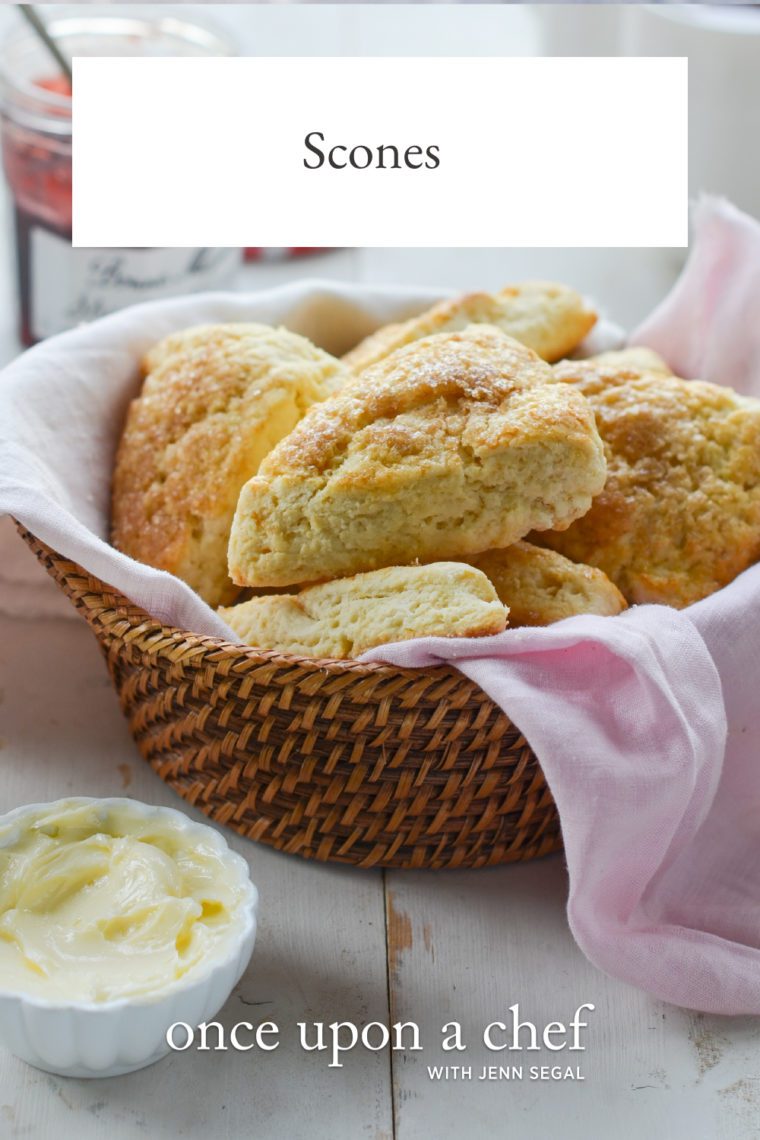
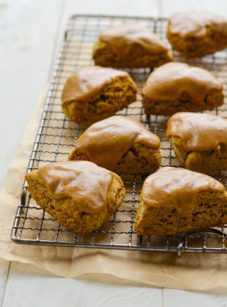
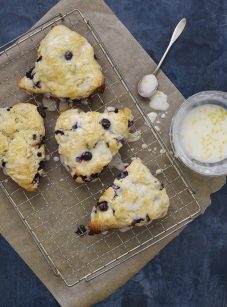
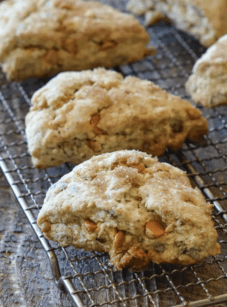
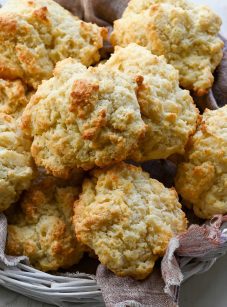
Thought I would add my experience in hope it helps some folks with some questions about ingredients. I have made this recipe numerous times (as written) and it is delicious. The directions I follow use the food processor. During holiday baking time, I set aside some flour in a bag and put it in my pantry. Yesterday, I decided to bake the scones and used that flour. After adding in the dry ingredients and giving them a quick whirl, I realized that it appeared that I had more than 2 cups of flour. I measured and I did! I then realized that the flour was for a cookie recipe using 3 cups of flour.
So I knew that I needed to add additional baking powder, sugar & salt and up the wet ingredients. I added additional dry then answered the phone. When I came back to finish, I totally forgot that I was NOT doubling the recipe. So I added double the amount of butter, 2 eggs and 1.5 cups of cream. But, I was 1/2 cup short on cream so I used full fat half and half. I gently patted out the sticky dough (using only my hands and fingers) and added a bit more flour to make the dough easier to handle. Cut them and baked. While they were baking I realized the flour was AP flour not cake. The result? DELICIOUS! Perhaps in a side by side comparison to the recipe as written, these would not be as good, but if you never had the original, you would not be unhappy. So the reason for my long post is simply to encourage bakers to try and salvage a recipe and have courage if you are not an experienced baker. Your recipes are always delicious.
My Mum and Dad used to travel all over Scotland(the scone capital of the world) when they retired. My Mum would collect scone recipes from all the places they visited and treat us when they returned.
This scone recipe rivals any that she brought home.
I love that the recipe seems foolproof so a newbie scone-maker can be assured of great results every time.
Hi
If you are going to freeze the scone, do you brush the top with egg and sugar before freezing or after freezing when you about to bake in the oven?
I’ve made the scones and they’re fantastic.
Hi Maureen, I’d wait until you’re ready to bake them. Glad you enjoyed the scones!
Hi Jenn—
You are definitely my “go to” person for recipes. Every one I’ve tried has been perfect. So now I plan to make your scones for a book club meeting (we just read Agatha Christie, so it seems appropriate) but I don’t have turbinado sugar for the glaze. Is there a substitute that would work?
Sounds like a great choice considering the book! You can replace the turbinado sugar with brown or even granulated sugar. Hope everyone enjoys!
Jenn,
I’ve made your blueberry scones from your first cookbook several times and have always followed the recipe exactly. They are sublime! The best compliment was from a friend over for brunch. He said that every scone he’s had was dry and he only took one to be polite. He said they were the best blueberry scones he’s ever had! Made my day! Now, I have a question …. Can I substitute half and half? How does it change the scone?
Thanks!!!
So glad you like the blueberry scones! I think you could get away with using half and half here but the scones won’t be quite as rich. The dough may also be a little thinner so you may want to cut back on the half and half by a tiny bit and add more if the dough seems dry. I’d love to hear how they turn out!
Excellent recipe! My wife is gluten free, so while I made the regular recipe for a group of friends and everyone enjoyed them, I also halved the recipe and made a smaller batch of gluten free scones for her. She gave the thumbs up! The GF ones were obviously a bit less fluffy than the cake-flour ones, but she said the flavors and textures were still really good. So if you are wondering if this can be made GF, yes it can. I just substituted Bob’s Red Mill 1 to 1 GF flour for the original recipe’s cake flour, using Jenn’s tip at the bottom of the recipe and combining it with some corn starch to approximate the cake flour consistency. Anyways, great recipe, enjoyed both the regular and the modified GF scones. Thank you!
Too dry. Would never use this recipe again.
These are absolutely delicious. Fortunately here in the UK there is no aluminium in our baking powder. I think these are more like what we call a shortcake but whatever you call them my husband wants no other! Lovely recipe Jen.
Jen, I love the flavor of vanilla. If I add vanilla to this recipe, will it still work?
Yep 🙂
I just made these and they vanished! Even my adult son who said he doesn’t like scones gobbled his down. We had them with butter and lemon curd, absolutely delicious! And so easy to put together! Thank you, Jen for another winner!!❤️